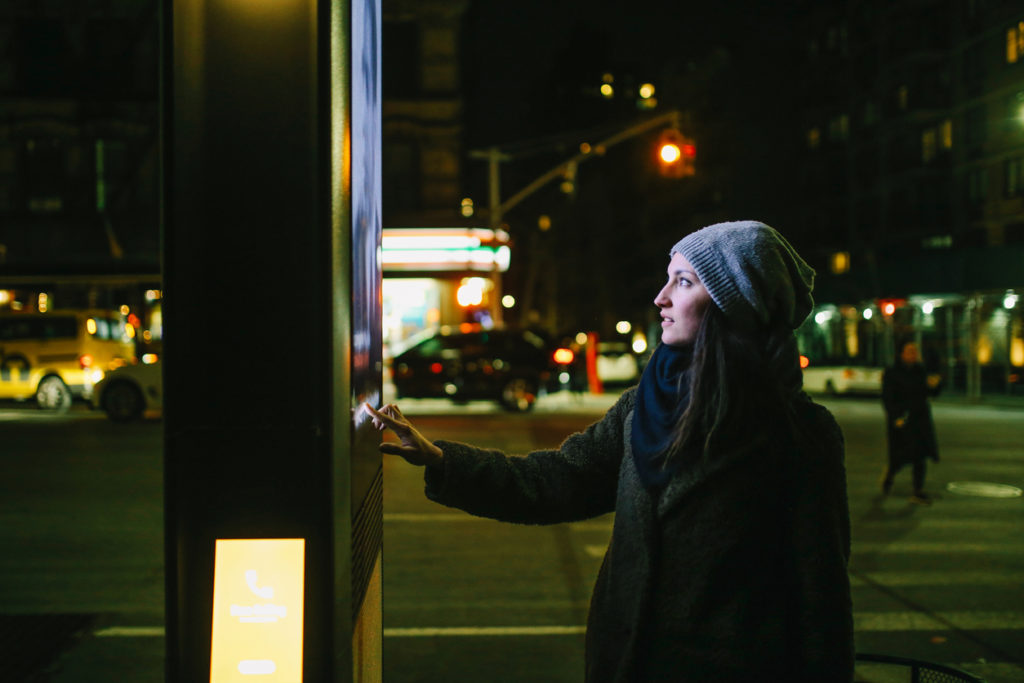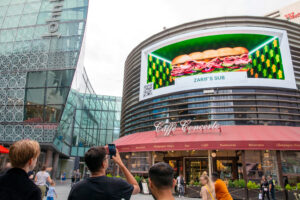by Dom Kozak, Head of Programmatic, JCDecaux UK
Over the past 12 months, programmatic DOOH (pDOOH) has gone from strength to strength with revenues reported at a global level up 63% year on year in H1 2023. This growth has been underpinned by a united effort from early adopters to educate the wider industry about the benefits of the channel.
It’s been a year of firsts when it comes to education and knowledge sharing. From research into pDOOH’s integration into omnichannel strategies to open discussions about data integration, measurement, the impact of great creative, and the resurgence of location targeting in cross-channel strategies – the industry has spoken out and adoption is growing rapidly.
For me, 2023 has been the year that pDOOH has moved out of the ‘emerging channel’ stage and earned a place in the mainstream media mix. What comes next is where things will get really interesting. As competition increases, I believe that marketers will focus on data integration, increasing contextual relevancy of creative, creating better cross-channel user journeys, and sustainability to get the most from their pDOOH investment in an omnichannel context.
More effective first-party data integration
Over the past few years, there’s been a surge in the number of brands sharing their first-party data with their technology and media partners but the impact on media performance has been somewhat lacking. This is because in many cases what has been called ‘data integration’ was more akin to a ‘data dump’ – a simple transfer of huge amounts of data from one platform to another without considering how that data would be acted upon. In 2024 we will see more strategic use of first-party data where it is shared in a way that is compatible with how media is activated, e.g. by location or business objective, and measured.
There are many use cases for more effective data integration, and, of course, the most effective strategy will be unique to every brand, but I believe that the following three applications are worth of consideration for almost every brand investing in pDOOH.
Personalised, contextually relevant creative
We are in a decade of deconstruction where traditional life paths are being eroded by new limitations, necessities and opportunities, significantly shifting demographics. Today’s adults are multifaceted, changeable, and almost impossible to pigeonhole. This means that traditional audience targeting is no longer the most effective way to engage consumers and work the marketing funnel.
Your first-party data holds the key to overcoming the marketing challenges associated with the ‘decade of deconstruction’. When thoughtfully segmented, first-party data gives you a rich view of what your customers look like and their preferences. By including location in the creation of these segments, marketers can develop creative strategies that ensure that the ads they show are reflective of the communities they reach, as well as promoting the products they are mostly likely to buy.
Cross-channel support
No marketing channel exists in a vacuum and while it’s rare for a brand to invest in every single channel out there, the majority invest in several channels concurrently. By adopting an omnichannel, or cross-channel approach brands can create more consistent, cohesive, memorable experiences across multiple touchpoints.
One of the challenges we’ve seen in 2023 is rooted in the fact that pDOOH occupies a unique position as a channel. It is bought using technology that is most commonly used to drive performance metrics but the ads themselves cannot physically generate those metrics (I.e. you can’t click on a billboard and buy something).
Those with experience in pDOOH know that in order to address this conundrum, you need to look at how each channel in your media mix amplifies other channels. This insight can then be transformed into tactics that maximise the cumulative effect of all the channels in your media mix. In 2024, I predict that pDOOH is going to become more integrated with social media, connected TV (CTV), and retail media in particular.
By forging closer connections with social media, brands can amplify their influencer/creator partnerships while building increased consumer trust and overcoming some of the negative consequences that can come from a social media-dominated strategy. Creating synergy between CTV and pDOOH helps brands to achieve greater brand fame and is especially popular with smaller brands for which these two channels would previously have been inaccessible until much later in their development. Supporting online retail media efforts with pDOOH (especially in supermarket environments) enables advertisers to increase reach and awareness as well as gather valuable cross-channel data that provides a comprehensive view of audience behaviour.
Cross-device consumer journeys
Geofencing and retargeting aren’t new concepts, but they are going through a bit of a reinvention that I believe is going to result in an upswing in adoption in 2024. Put simply, geofencing and the use of location data extends the reach of campaigns in cross-device consumer journeys. It’s a fantastic tactic for awareness, consideration, sales, and loyalty campaigns because it is so targeted.
Geofencing – defining bespoke areas on a map – enables brands to be incredibly targeted when it comes to the locations in which their ads run. It also gives you the opportunity to advertise to anyone who has been in your key location, even after they have left the area. It’s like retargeting but using physical movements and combining the real world with online.
Focus on quality and sustainability
As we’ve seen with various other digital channels over the past decade, as pDOOH reaches a critical stage in maturity we will see buyers start to focus more on quality and sustainability and start to optimise their supply chains accordingly.
In 2024, we will see a focus on investing in quality publishers, i.e. those with the highest quality screens in the best locations, as well as those that can prove their environmental sustainability claims. But there is also an education piece to be done within the digital and programmatic buying community that are often unaware of the wider community benefits OOH and DOOH bring.
While it’s unrealistic to expect these factors to be baked into data-led planning, we expect that these additional benefits will be part of the decision-making process when selecting channels. After all, who wouldn’t choose to invest in a medium where 50p of every £1 goes back into the community rather than risking increasing ad budgets going to made for advertising (MFA) websites that offer no value to consumers or advertisers.
What will your pDOOH strategy look like in 2024?
Cohesive, data-driven, sustainable. These are the three words I would encourage anyone looking to invest in pDOOH in 2024 to keep top of mind when thinking about the how and the why behind campaigns. Regardless of your objectives – by ensuring that your pDOOH campaigns are fully integrated into your media mix, not treated as stand-alone activities, you will ensure that the channel works as hard as possible to deliver results and enhance the performance of other channels.
Clever application of data will move the needle for brands helping them to stand out in a way that resonates with individual consumers rather than outdated, predefined ‘audiences’. Data also holds the key to maximising efficiency the definition of which in 2024 should include cost, resource, and environmental factors.












